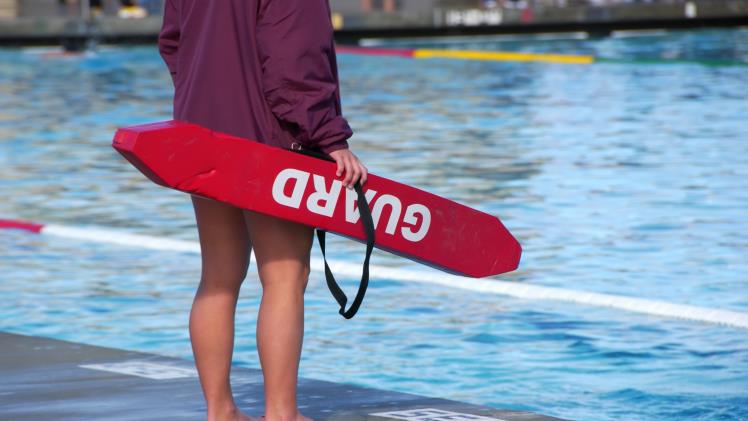Lifeguard training plays a crucial role in preparing individuals to save lives and ensure the safety of swimmers in various aquatic environments. California, known for its beautiful beaches and vibrant pool culture, offers excellent opportunities for lifeguard training.
When it comes to physical fitness and building essential skills for lifeguarding, swimming stands out as the best exercise. In this article, we will explore why swimming is the ideal choice for lifeguard training its numerous benefits, and how it enhances lifeguard skills and abilities.
Enhancing Physical Fitness
Swimming is a highly effective exercise for developing and maintaining overall physical fitness. It provides a full-body workout that engages multiple muscle groups simultaneously, including the arms, legs, core, and back.
Lifeguards need to be physically fit and possess strength, endurance, and agility to perform their duties effectively. Swimming regularly helps build cardiovascular endurance, muscular strength, and flexibility, enabling lifeguards to respond quickly and efficiently in emergency situations.
Improving Water Competency
Since lifeguards primarily operate in water environments, developing strong water competency skills is essential. Swimming regularly allows lifeguards to become more comfortable and confident in the water. They learn various swimming strokes, techniques, and efficient breathing patterns, enabling them to move through the water swiftly and effectively.
This improved water competency translates into better rescue and surveillance capabilities during lifeguard duties.
Enhancing Rescue Techniques
Lifeguards must possess a range of rescue techniques to safely assist swimmers in distress. Swimming regularly provides lifeguards with firsthand experience in various water conditions, allowing them to develop a deep understanding of water dynamics and currents.
By practicing in different environments, such as pools, lakes, and the ocean, lifeguards become adept at navigating through waves, currents, and turbulent waters. These experiences enhance their ability to perform rescues efficiently and with confidence.
Building Endurance and Stamina
The demands of lifeguard duties often require long periods of physical exertion and vigilance. Swimming is an excellent exercise for building endurance and stamina, essential qualities for lifeguards. Regular swimming sessions gradually improve cardiovascular fitness, allowing lifeguards to sustain their performance over extended periods.
This enhanced endurance is crucial during prolonged rescue operations, where lifeguards need to swim long distances or tread water for extended periods while providing support and reassurance to the victim.
Developing Mental Focus and Discipline
Swimming as an exercise demands mental focus, discipline, and concentration. Lifeguards must remain alert and vigilant while on duty, continuously scanning the water for potential hazards or swimmers in distress. Swimming provides an opportunity to develop and enhance these mental attributes.
Through repetitive movements and rhythmic breathing, lifeguards can cultivate mental focus, discipline, and the ability to remain calm and composed under pressure, all of which are critical in emergency situations.
Stress Relief and Mental Well-being
Lifeguarding is a demanding job that requires individuals to cope with high-pressure situations and make split-second decisions. Swimming is not only an excellent physical exercise but also a fantastic way to relieve stress and promote mental well-being.
The rhythmic nature of swimming, combined with the soothing properties of water, creates a calming effect on the mind. Lifeguards can use swimming as a means to unwind, recharge, and rejuvenate, helping them maintain a healthy work-life balance and prevent burnout.
Lifeguard certification and Training Opportunities
In California, a state with numerous beautiful beaches and a strong lifeguard culture, lifeguard courses are widely available. Many organizations offer lifeguard classes near me that emphasize swimming as a fundamental component of their training curriculum.
These courses provide comprehensive theoretical knowledge and practical skills necessary to become a certified lifeguard. Organizations like the American Lifeguard Association (ALA) are renowned for their lifeguard training in California and are committed to ensuring the highest standards of lifeguard certification.
Improving Communication and Teamwork Skills
Lifeguarding requires effective communication and teamwork skills, as lifeguards often work in teams and must communicate with each other to coordinate rescue efforts and ensure the safety of swimmers. Swimming provides an ideal platform for developing these essential skills.
During training sessions, lifeguards engage in synchronized swimming drills, relay races, and team exercises that foster communication and teamwork. These activities require clear and concise communication, trust, and coordination, all of which are vital in emergency situations where lifeguards must work together seamlessly to save lives.
Injury Prevention and Rehabilitation
Lifeguards not only need to be proficient in rescuing others but also in taking care of themselves. Swimming serves as a low-impact exercise that minimizes the risk of injuries often associated with high-impact activities. Regular swimming helps improve joint flexibility, strengthen muscles, and increase overall body stability.
Additionally, in the unfortunate event of an injury during lifeguard duties, swimming can be utilized as part of the rehabilitation process. The buoyancy of water reduces the impact on injured joints or muscles, allowing for gentle movement and accelerated recovery.
Transferable Skills and Lifelong Fitness
One of the significant advantages of swimming as the best exercise for lifeguard training is the transferable skills it provides. Lifeguards who undergo extensive swimming training develop a wide range of skills that can be applied in various aspects of life. These skills include discipline, determination, time management, and goal-setting.
Furthermore, swimming is a lifelong fitness activity that can be enjoyed well beyond a lifeguard’s career. By incorporating swimming into their regular exercise routine, lifeguards can maintain their physical fitness and continue reaping the benefits of this versatile exercise throughout their lives.
Conclusion
Swimming continues to be the optimal exercise for lifeguard training, offering a multitude of advantages that directly contribute to a lifeguard’s effectiveness and success. From enhancing physical fitness and water competency to fostering teamwork and communication skills, swimming plays a vital role in shaping well-rounded lifeguards.
Moreover, swimming provides injury prevention, rehabilitation support, and transferable skills that extend beyond lifeguarding. With lifeguard classes near me and reputable organizations like the American Lifeguard Association providing comprehensive training and lifeguard certification, individuals can embark on a fulfilling and rewarding lifeguarding career, backed by the unmatched benefits of swimming.

